Homemade wholemeal bread easy to make and very healthy

Making Homemade wholemeal bread at home is doubly gratifying, because of the satisfaction of seeing our work grow and evolve and because we can enjoy a truly delicious loaf. In addition to knowing the ingredients and the type of flour it contains, we can adapt everything to our tastes. To make bread you have to have flour, water, salt, yeast and patience. More patience than yeast, as breads made with time and long rises are much more digestible and gain significantly in flavor. And when we talk about long rises, it does not mean looking at the bread during the process, but rather keeping the bread in the fridge and forgetting about it for hours. Whole wheat breads and rye breads are especially appreciative of these delays in the fridge, either in the first rise, before shaping, or in the second rise, with the bread already formed, as we will do in this case.
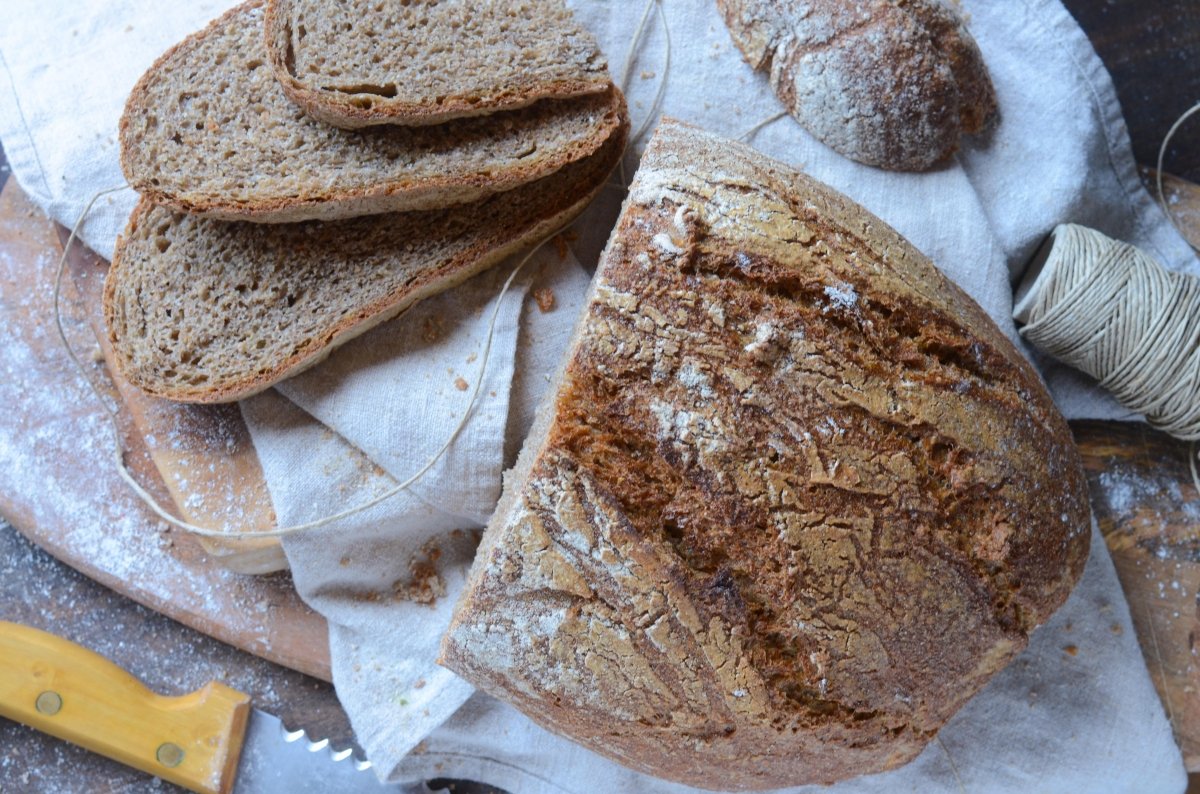
This, in addition to being a 100% wholemeal bread, is made with sourdough. However, if you do not have sourdough, it can also be made with yeast as detailed in the recipe.
recipe information
-
- Preparation time: 35 minutes
-
- Cooking time: 1 hour
-
- total time: 17 hours and 35 minutes
-
- rations:6
-
- Category: loaves
-
- type of cuisine: international
-
- calories: 283 kcal per serving
Ingredients for homemade wholemeal bread for 6 people
Ingredients for the ferment:
-
- 100 g whole rye flour
-
- 100g of water
-
- 25 g sourdough (or 3 g dry baker’s yeast)
Ingredients for the final dough:
-
- All the previous ferment
-
- 500 g whole wheat flour
-
- 450g water
-
- 10 g EVOO
-
- 14g salt
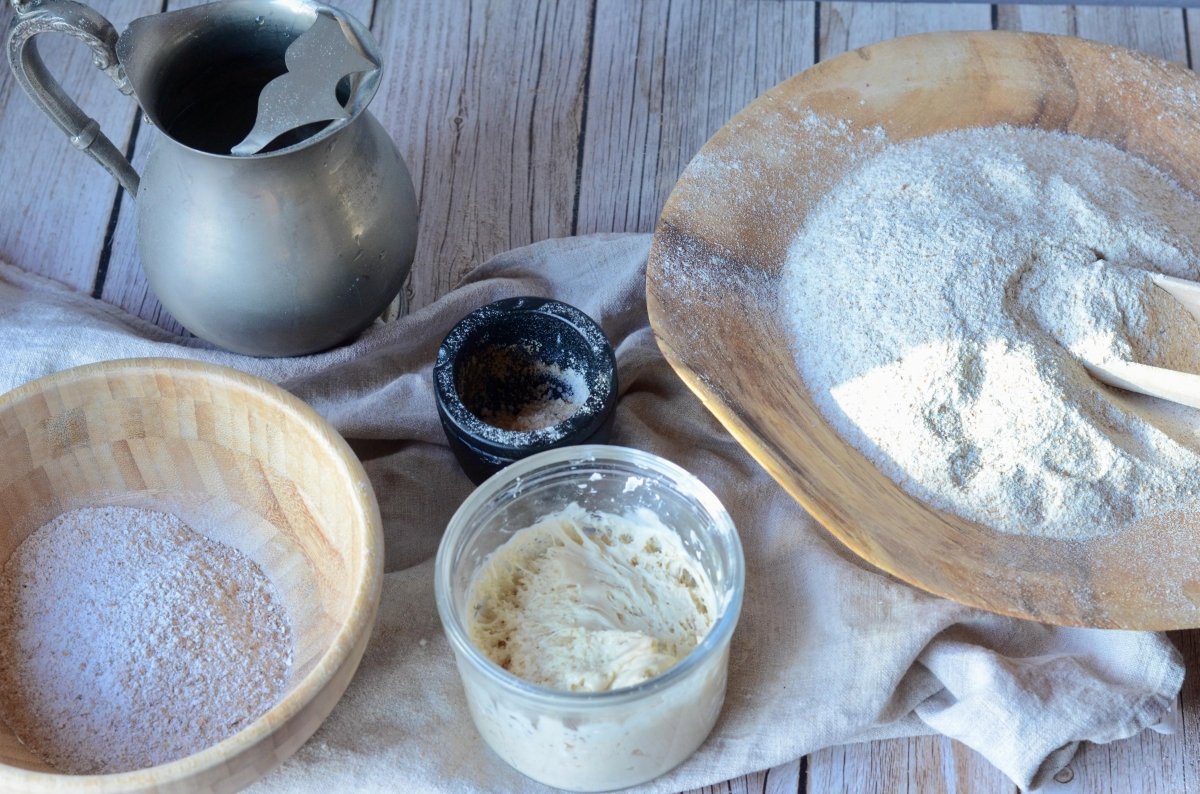
How to make homemade wholemeal bread
We start the recipe by weighing and measuring all the ingredients and making the sourdough pre-ferment first.
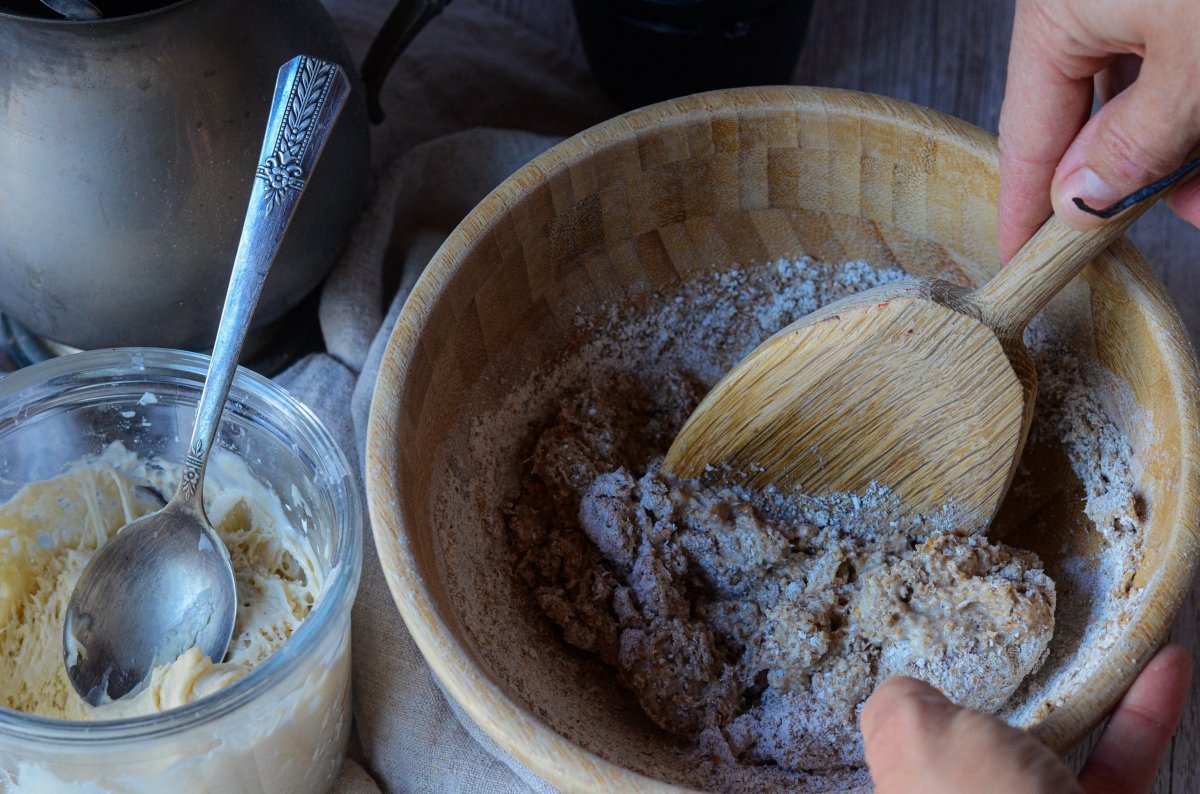
We take 25 g of our very active sourdough and add the water and flour. We mix everything with a wooden spoon and let it rise at room temperature, until it doubles its volume. It will take you about two or three hours. To check if the sourdough is ready to use in our bread, we put a teaspoon in water and see that it all floats. If we don’t have sourdough we can make a ferment with water, flour and 3 grams of dry yeast. Mix everything together and let it rise, covered, for about three hours.
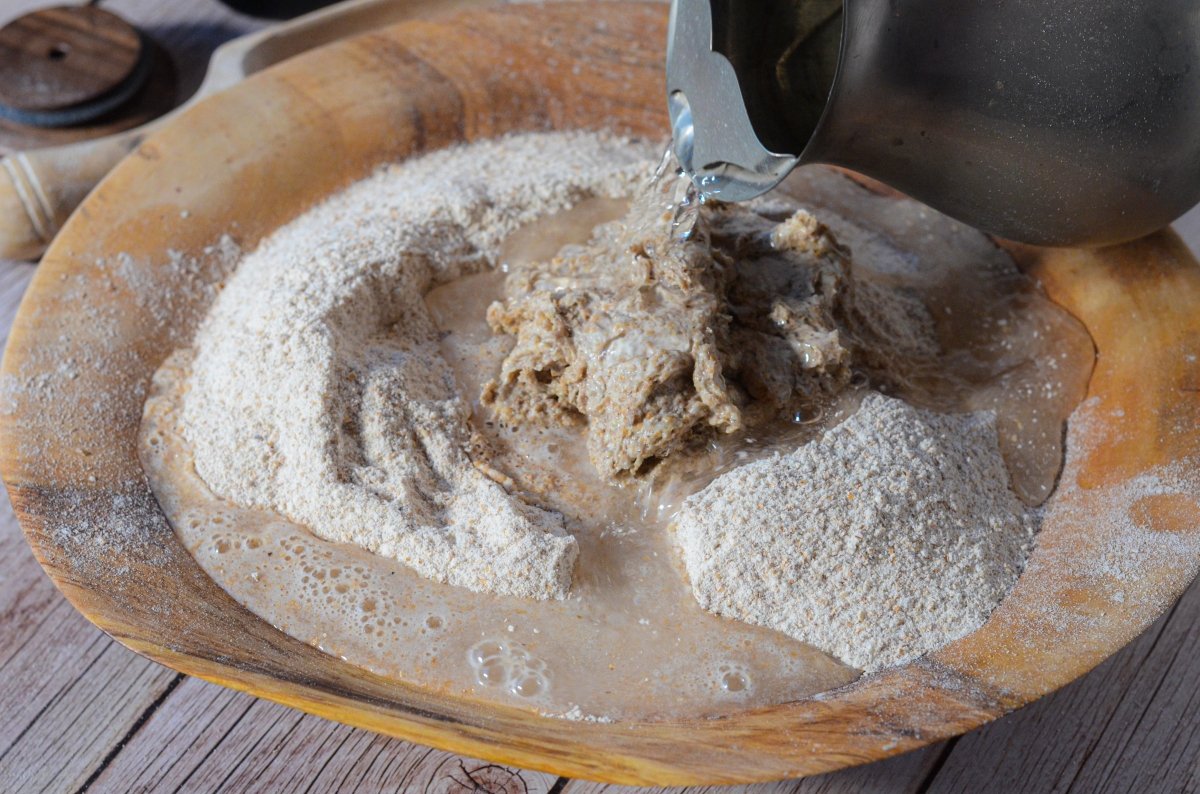
Next, we begin to knead the bread. Put the flour from the dough in a bowl and add the leavened ferment, the oil and the water, except for half a glass that we will add with the salt.
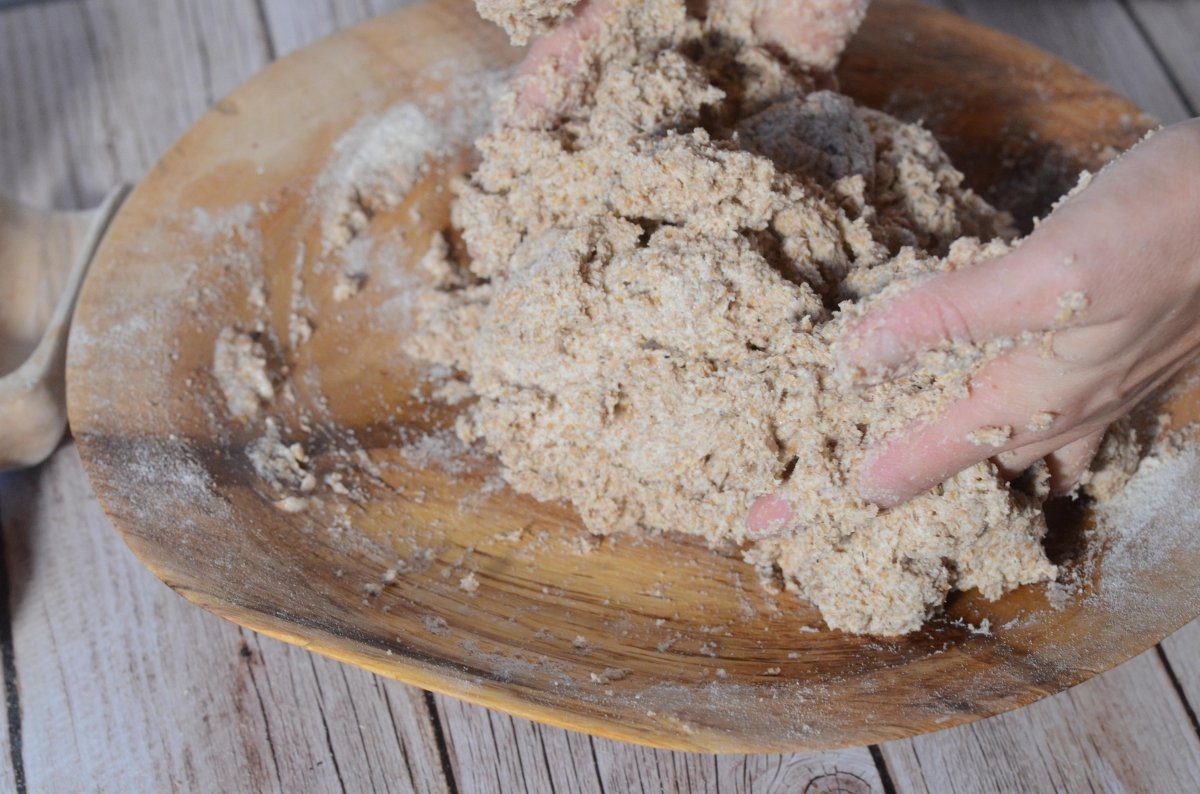
With our hands, we mix everything until it is integrated and we let it rest, covered, for 30 minutes as an autolysis.

Once the time has passed, we add the salt and water that we have reserved little by little. Since not all flours absorb the same amount of water, we may not need all of it, so it is better to add carefully so as not to overdo it.
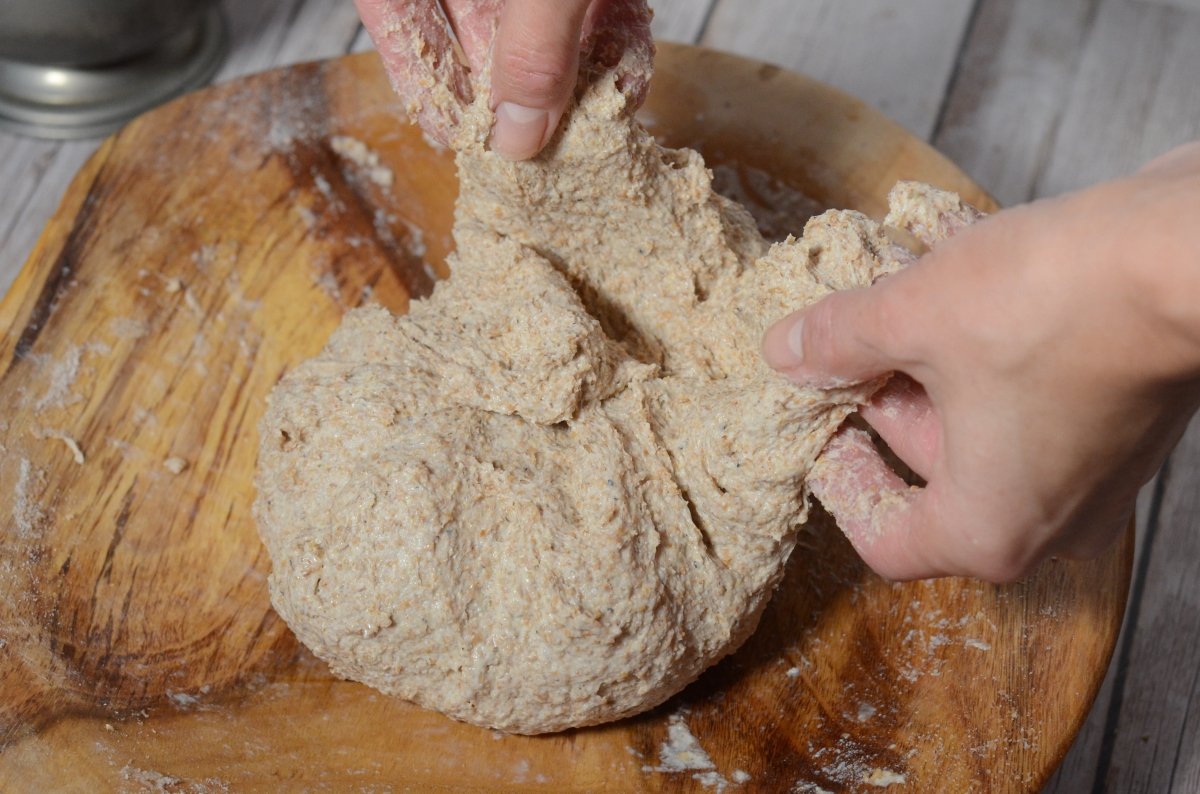
We knead a little until we integrate it and we will see how the gluten develops and the dough acquires a smooth consistency.

We continue kneading for a few minutes, we make a ball with the dough and we begin the block fermentation. During the first hour we will do three batches of folding every 20 minutes.
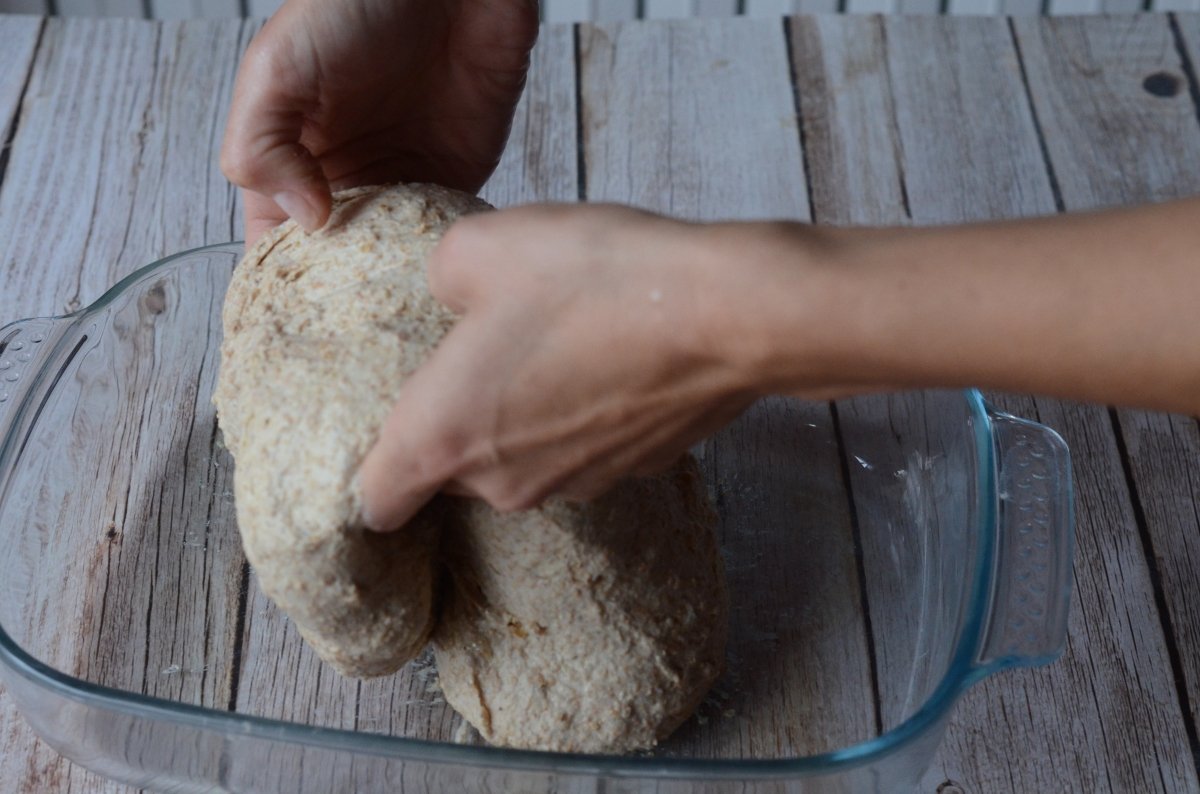
With wet hands, so that it does not stick to us, we take the dough in half, stretch it out and fold it on itself, and repeat it 3 times. We cover it and let it rest until the next batch of folding. Once we have made all the rests and folds, we cover it and let it rise for about two hours until it has doubled its volume. After the time of the first levado we will form the bread.
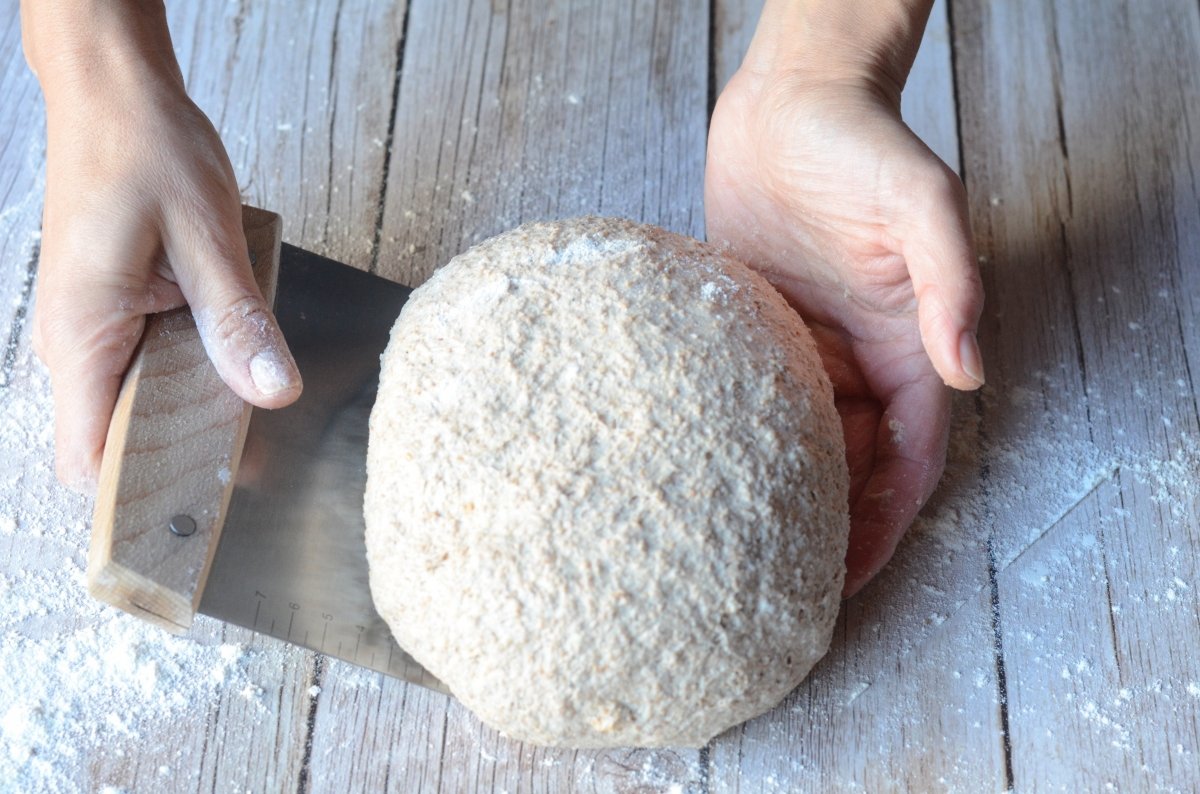
Sprinkle the work surface with flour, turn the dough over, make a ball with it and let it rest for about 15 minutes so that the gluten relaxes and then we can form the bread. Next, we give the final shape to the bread, which in this case will be a batard.
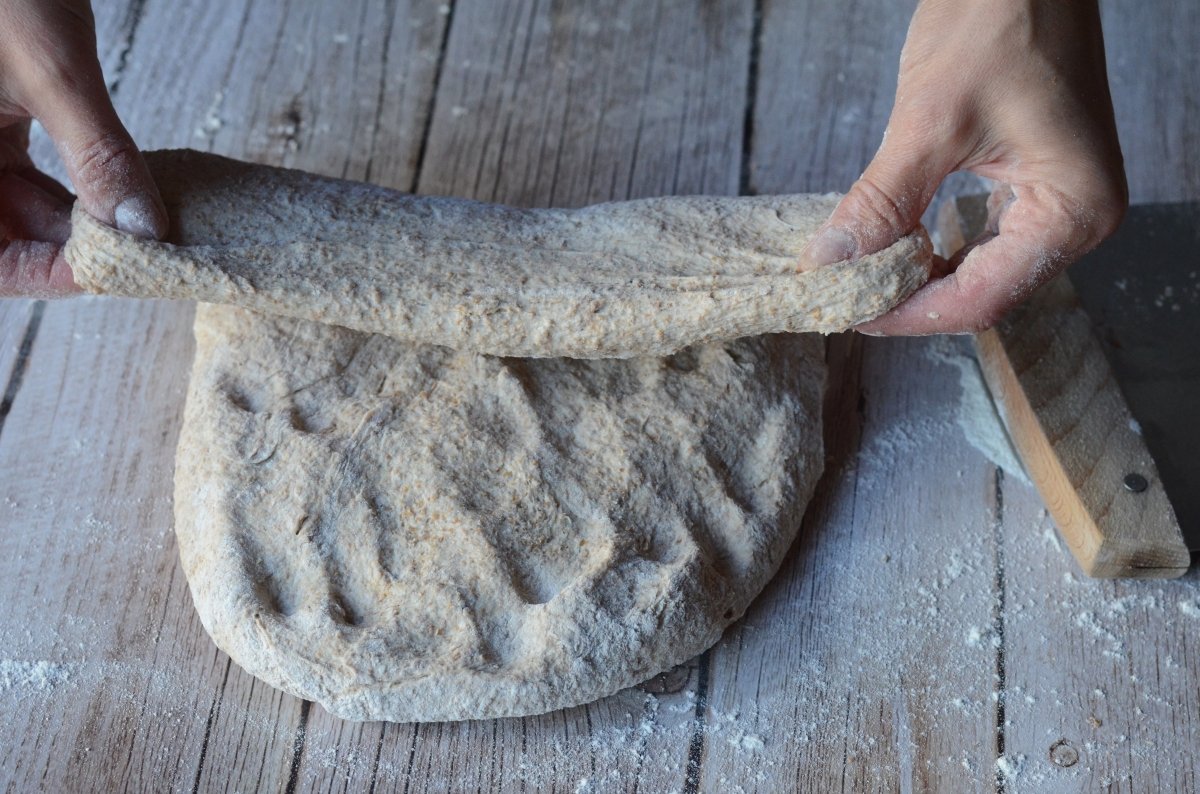
We stretch the dough a little, we grab it by the lower end close to us and we fold it over the rest, up to half.
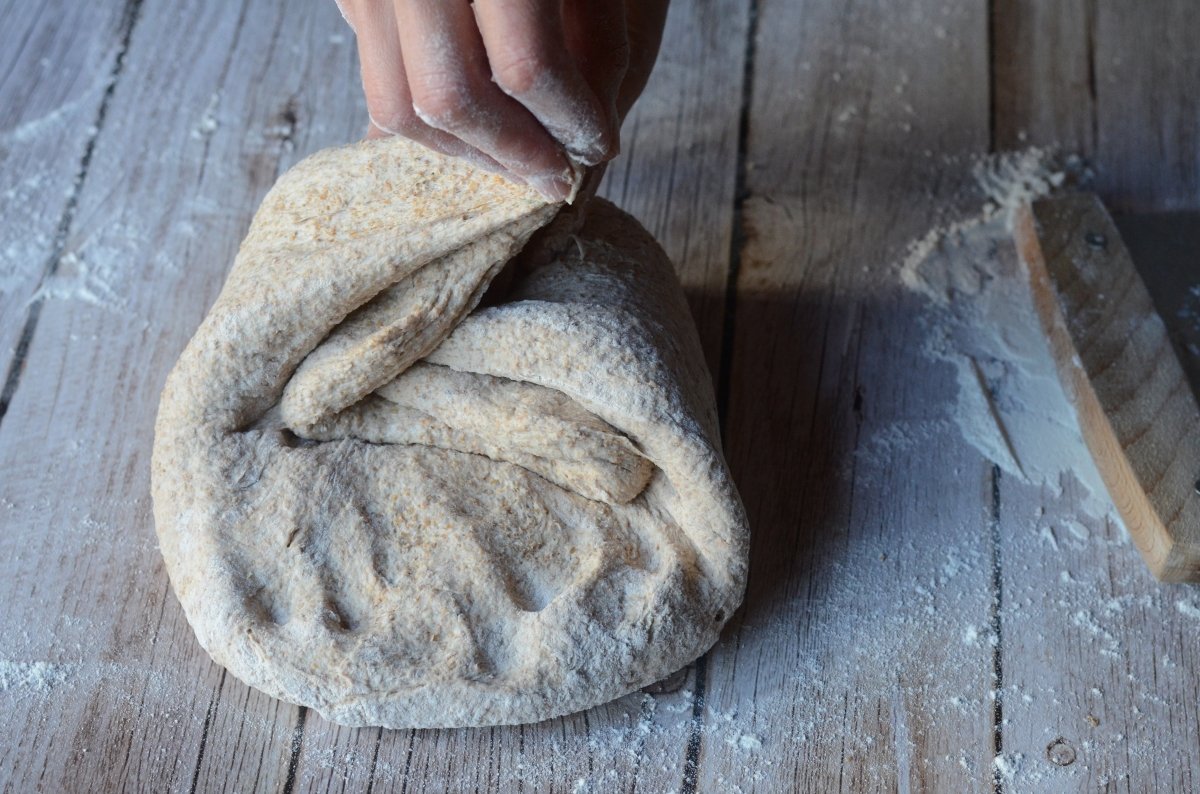
With the tips of our fingers, we take the ends of the dough, stretch them and fold them on themselves.
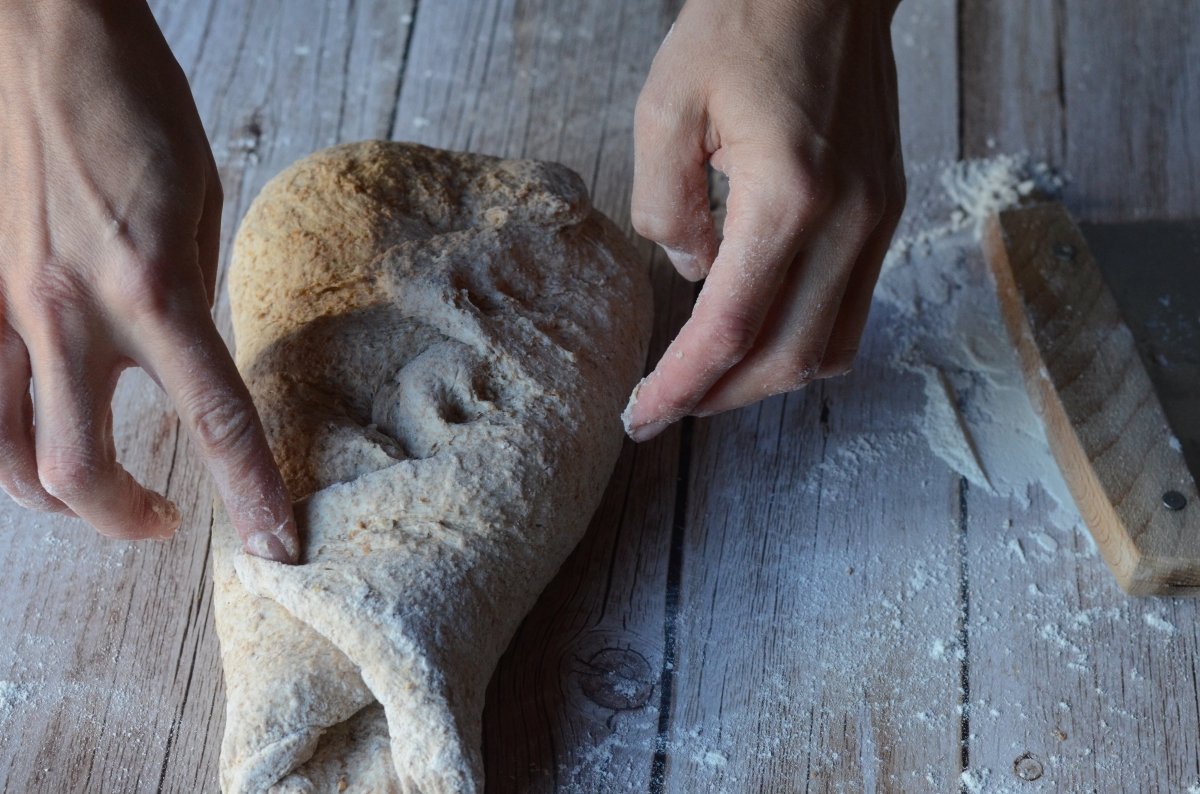
And so we are making folds towards the center, applying a little pressure in the middle, until we reach the upper end.
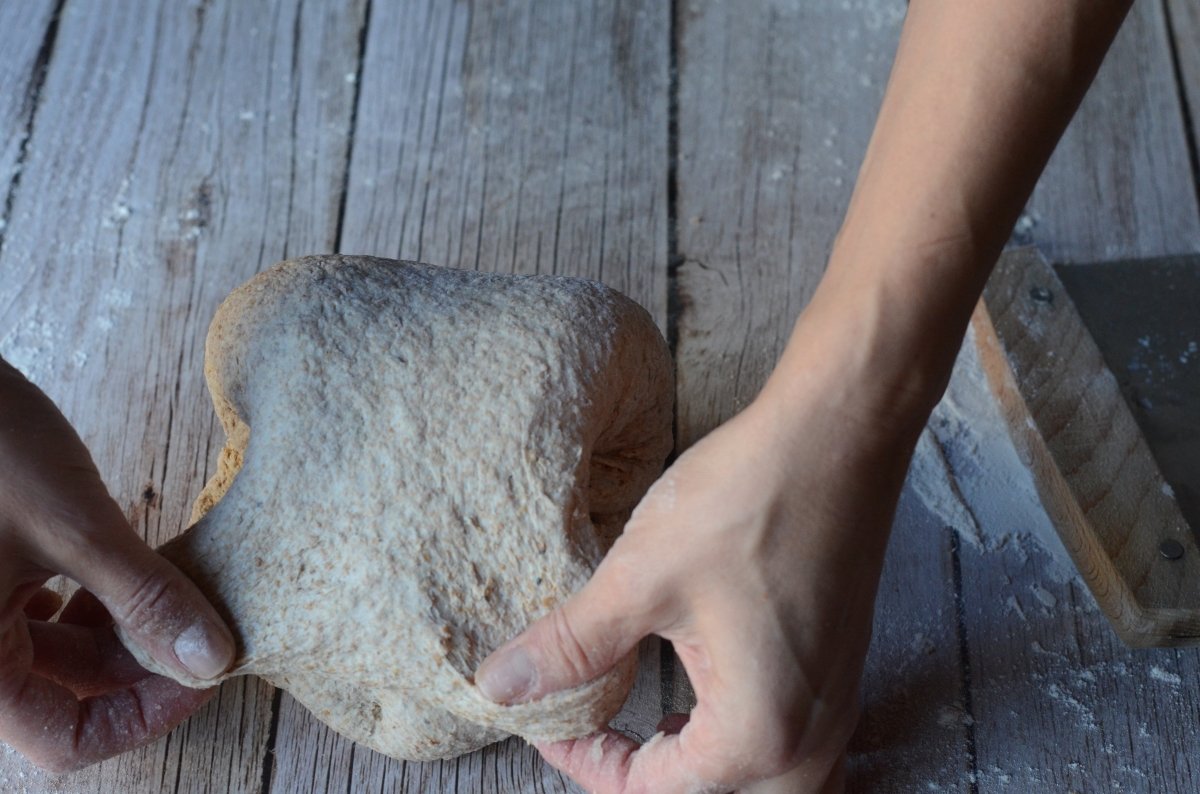
We take the dough by the lower end and fold it towards the top and we rotate the dough on itself.
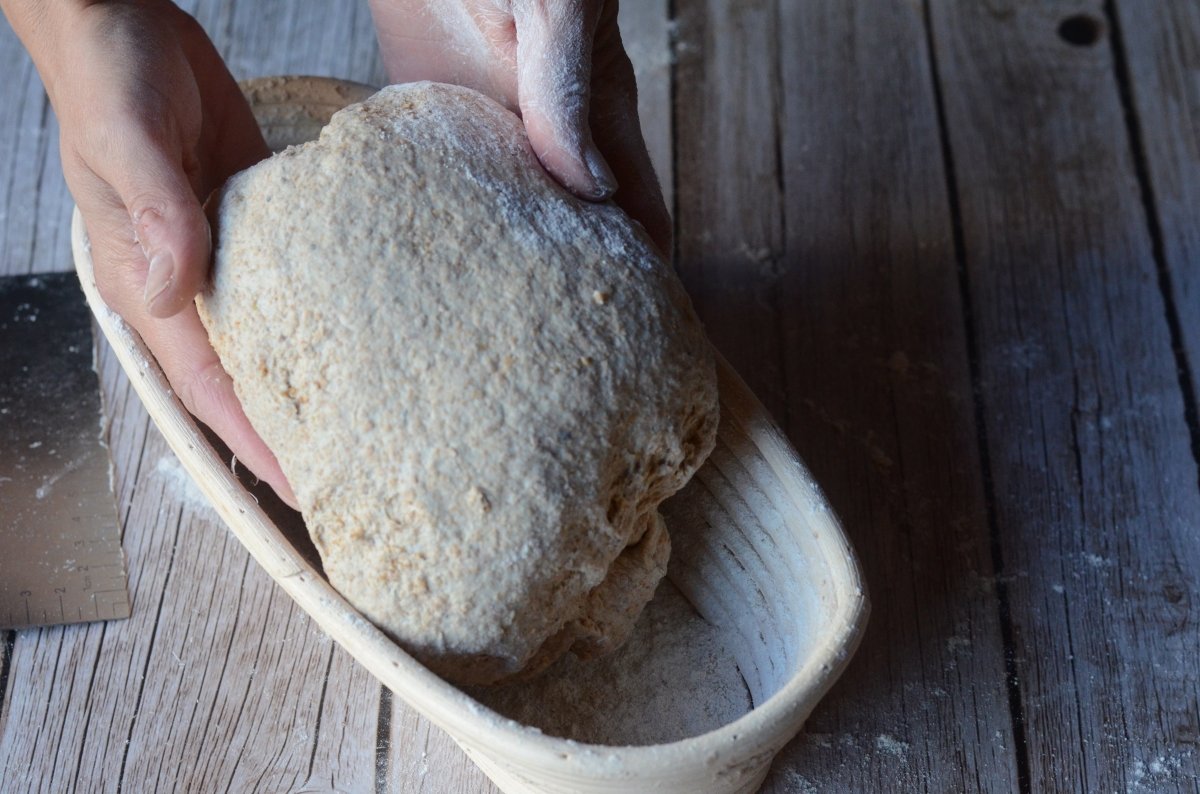
We close the ends and place it with the folds down in a rising basket, previously dusted with flour.
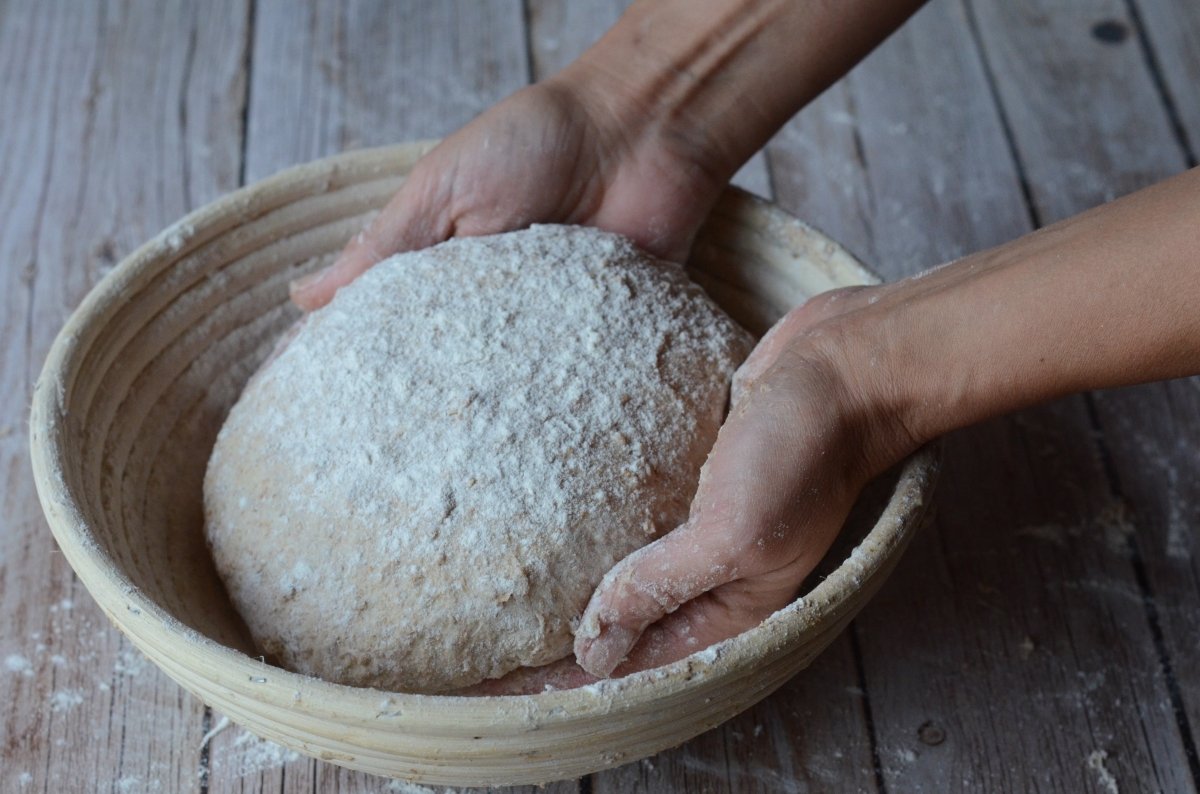
If this shape is difficult for us, we can round it and pass it to the fermentation basket. We cover it and leave it at room temperature for half an hour to start. Then, we keep it in the fridge for about 12 hours to slow fermentation. This cold delay is ideal for breads, especially whole wheat breads, which will gain in flavor and digestibility. The next day we put the oven at 250 °C, and let it preheat for at least one hour. We want the bread to receive a heat stroke when it enters the oven, which will make our bread rise. We can help ourselves by using an iron pot or a cloche or baking hood and in both cases, we have to put it in the oven and have it previously heated. I will use an iron pot with the same shape as the bread.
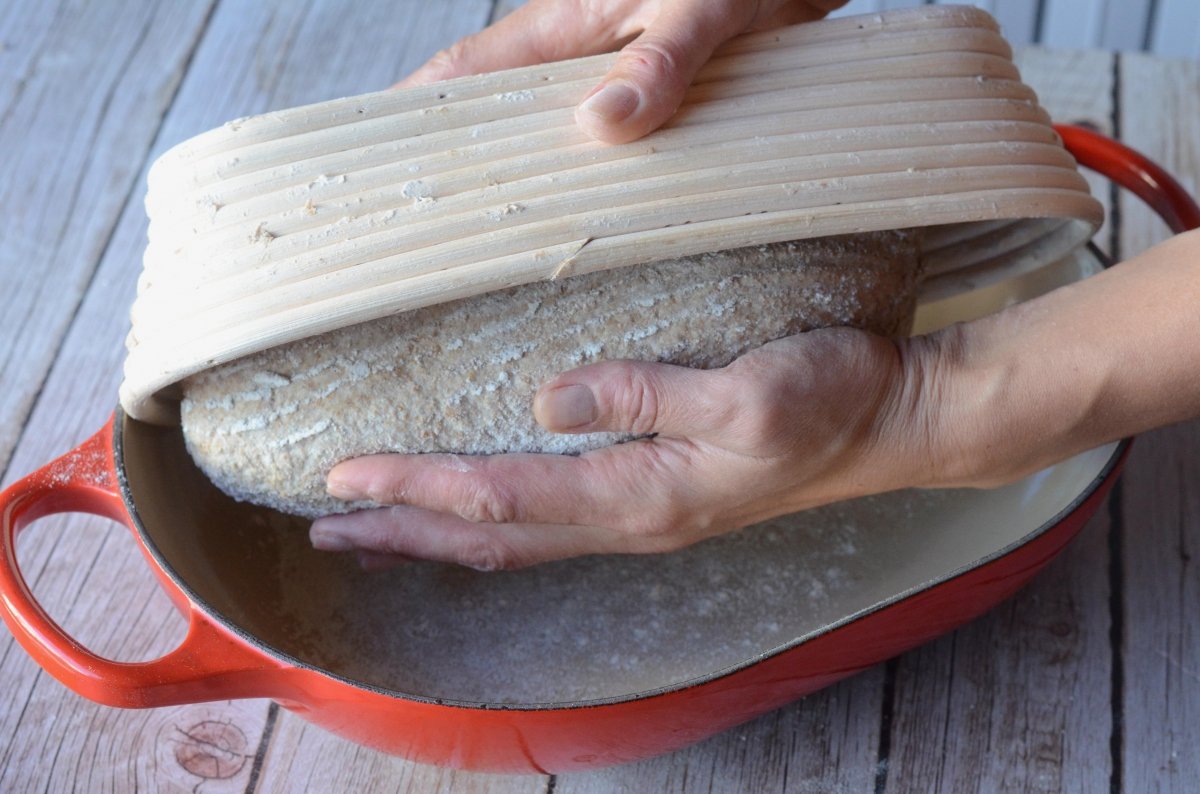
When it is ready, we take the bread out of the fridge, very carefully remove the pot from the oven and uncover it. Sprinkle the surface of the pot with a little semolina and pour the bread inside.
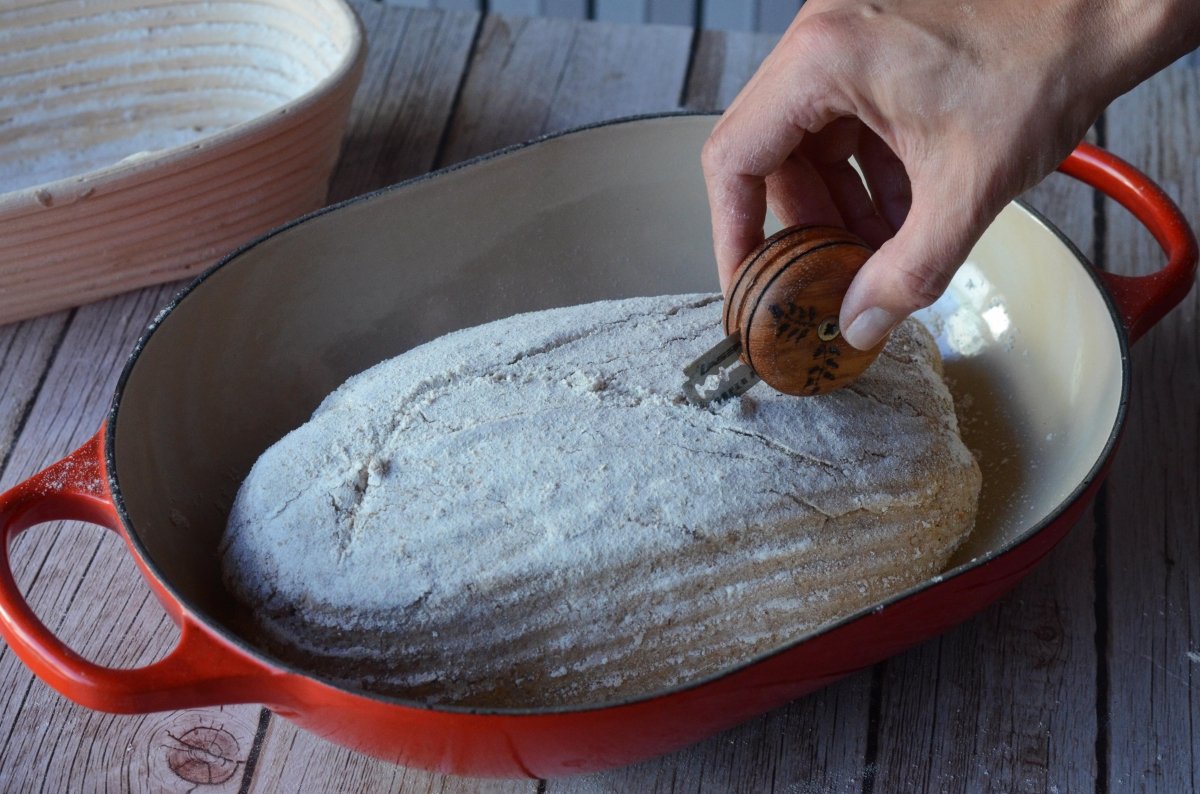
Quickly we make some shaggy cuts, where our bread will open. We spray a little water, cover the pot and quickly put it in the oven.
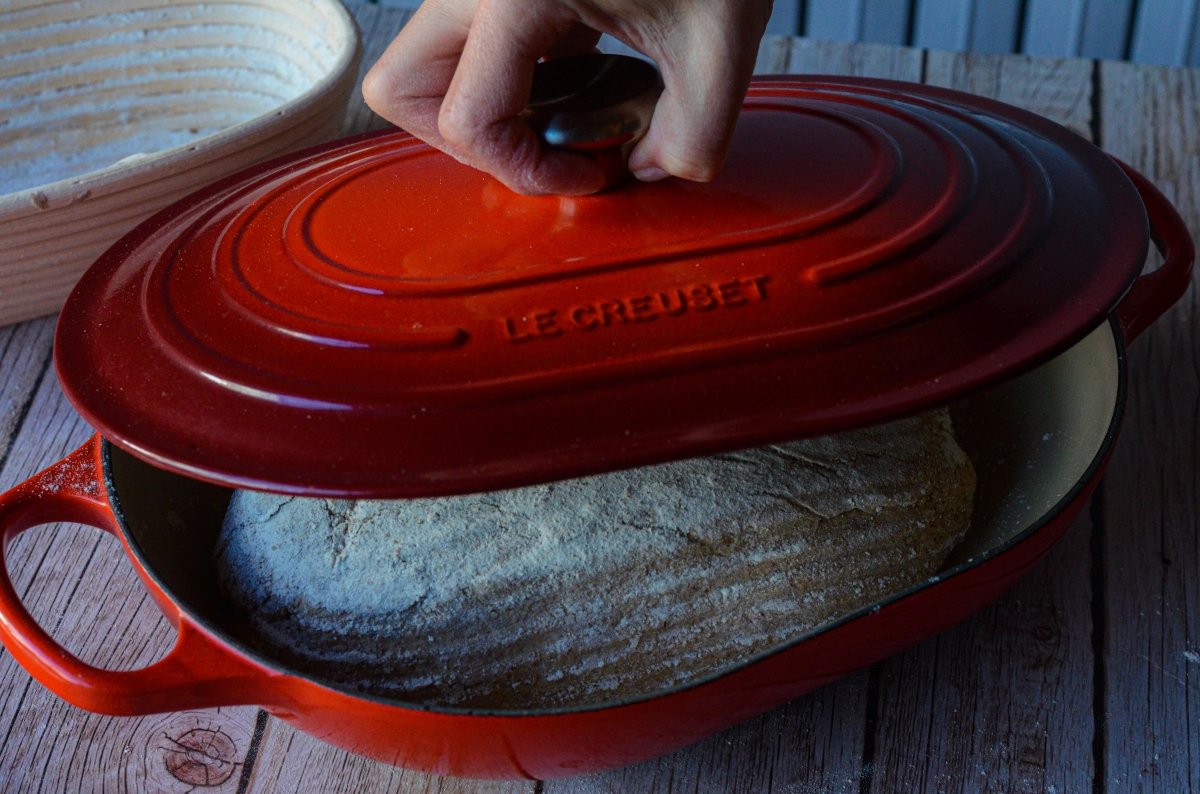
After 20 minutes, we lower the oven temperature to 230 °C and leave for another 30 minutes. Then we uncover the pot and leave it for another 10 minutes to finish baking. As I always say, the times are relative and will depend on each oven, although by doing it in the iron pot, we manage to unify the baking conditions.
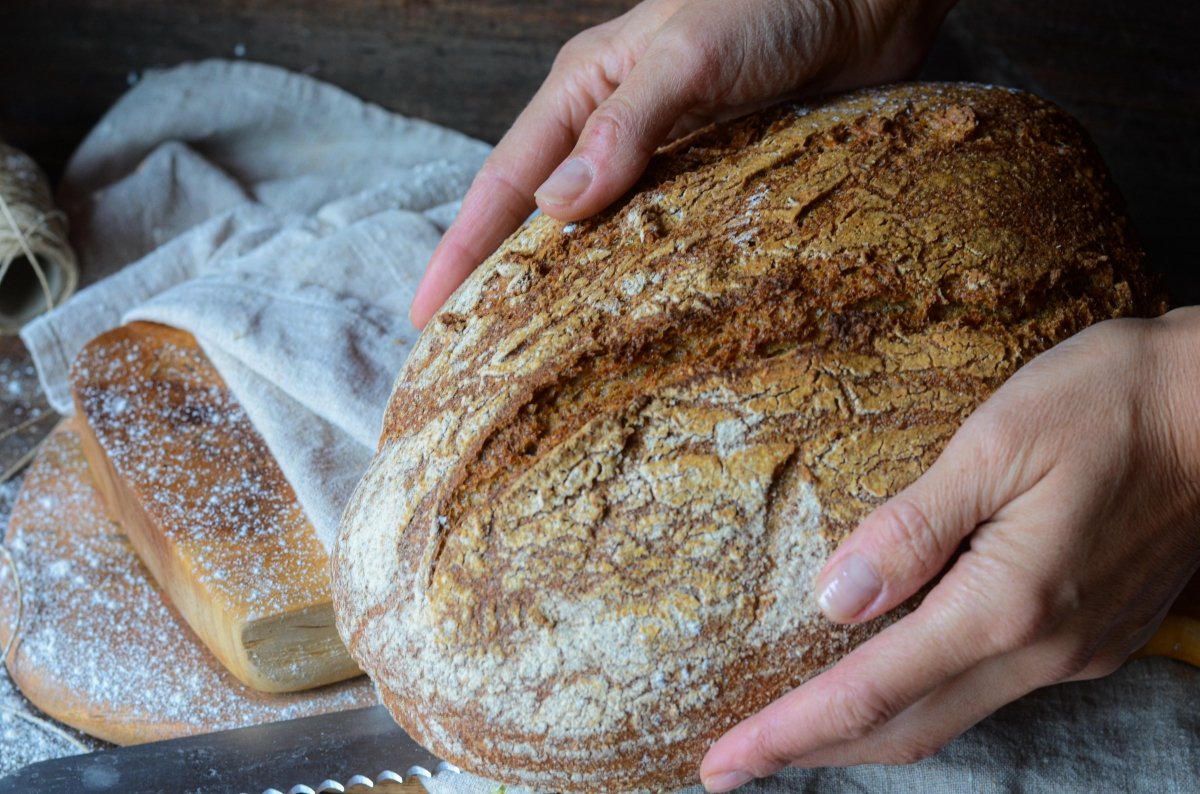
Carefully remove the bread and let it cool on a wire rack. When it is completely cold, or even the next day so that the flavor in these whole grain breads settles more, we cut the bread into slices and enjoy it with a good oil.
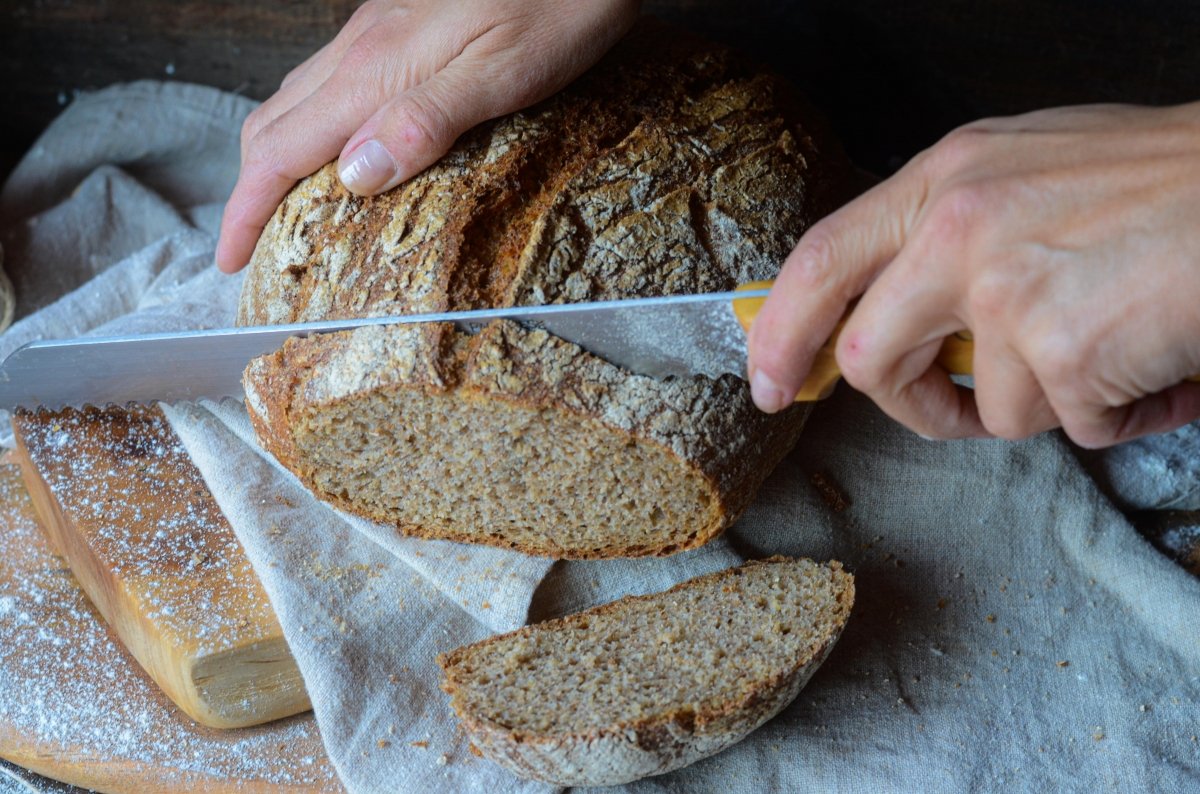
To preserve it we can cut it into slices and freeze it like this and then we remove it from the freezer as needed. In my case, I remove the slices I need, put them in the toaster and in a few minutes I have some delicious toasted bread.
Easy preparation summary
-
- We weigh and measure the ingredients of the recipe
-
- We make the ferment by mixing the ingredients
-
- We let it rest for about two hours, until it is ready for use.
-
- When the ferment is ready we knead the bread
-
- Mix the ferment with the water and flour and let it rest for 20 minutes
-
- Next, add the salt and knead
-
- Let the covered dough rest and after 20 minutes we fold the dough
-
- We will repeat the rests and the folds 2 more times
-
- Cover the dough and let it rise in block for two hours
-
- Next, we form the loaf, rolling the dough with a little tension first.
-
- Then we form the bread in the way that we like the most, which in our case was a batard
-
- Cover it and leave it at room temperature for 30 minutes, then store it in the fridge until the next day.
-
- We put the oven at 250 °C with an iron pot or a clay bell inside and let it preheat for an hour
-
- Remove the iron pot, sprinkle with semolina, pour the bread inside and weave or cut it
-
- We spray water and cover it
-
- We put the pot in the oven again and leave it for 20 minutes
-
- Lower the temperature to 230 °C and leave it for another 30 minutes
-
- Next, we uncover the pot and leave it for another 10 minutes
-
- When it is ready, remove it to a wire rack and let it cool completely before cutting it.















Welcome to Sweet Eats Cakes
Where delectable dreams come to life in the form of exquisite confections! Sweet Eats Cakes isn't just about taste; it's about turning moments into memories. Our cakes are crafted with precision, attention to detail, and a sprinkle of magic to ensure that each slice is not just a treat for the taste buds but a feast for the eyes!